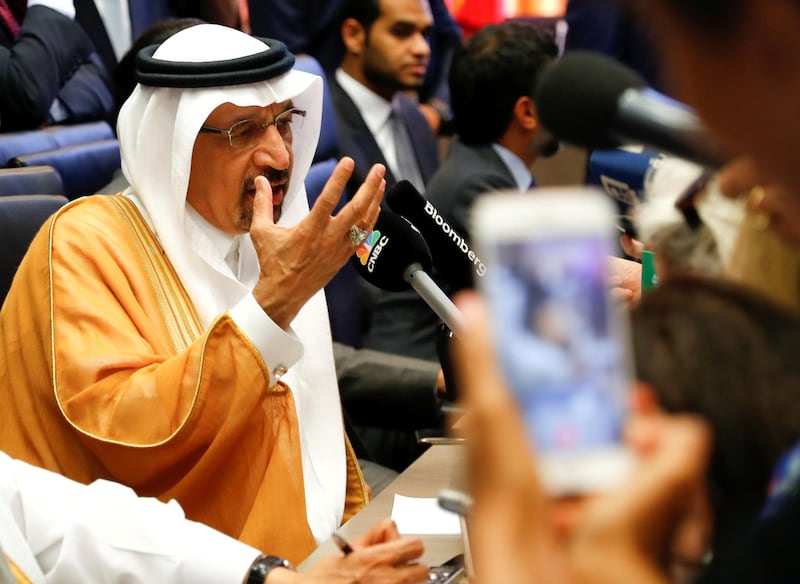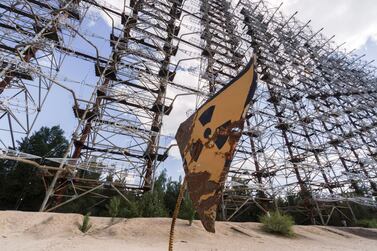“US shale will peak, plateau and then decline like every other basin in history,” Saudi energy minister Khalid Al Falih said at last week’s Opec meeting in Vienna. The oil producers’ organisation concluded a ground-breaking formal pact with the Russia-led non-Opec countries, commemorated with a poem. But is this diplomatic and literary success storing up problems for the future?
The Opec+ arrangement, concluded in December 2016, has revived prices from a low below $29 (Dh106.51) per barrel in early 2016, to steadily above $60 during 2018 and 2019.
Compliance to the deal’s production cuts has been at record levels – 90 per cent or better, compared to previous quotas where adherence of 60-70 per cent was considered success. Opec has benefitted for the first time ever from real cooperation with Russia, as well as more token cuts by some other non-Opec producers. Two major producers – Iran and Venezuela – have been virtually eliminated from the world market by sanctions and internal turmoil, and a third, Libya, has been shaky. Apart from Iraq and to some extent the UAE, no Opec member has achieved strong growth in capacity, as Venezuela did in the late 1990s.
Yet, with almost all factors in its favour, the Opec+ deal has still delivered prices well below the $100 per barrel sustained between 2011 and late 2014.
The policy of extending and formalising production cuts faces several concerns. First is the world economy. Until recently, worldwide growth has been generally reasonable, but now there are signs of a slowdown, worries over trade wars and a weakening physical crude market. Recent geopolitical concerns, particularly the attacks on tankers in the Gulf of Oman, have added a few dollars to prices, without which they would probably have slipped below $60 for the first time since early January.
Second is the loss in market share. Opec’s output is at the lowest since April 2014, yet economic modelling suggests the organisation’s best long-term strategy in the face of uncertainty is to keep its share of the market constant.
Looking back further in history puts this in context. Opec’s all-time record market share was 53.1 per cent in 1973, just before most of its Arab members curbed output in the first oil crisis. The group then tried to maintain unsustainably high prices, in the face of massive new supply from the North Sea, Alaska and Mexico, and a slump in demand as governments mandated fuel-efficient cars and switched power generation to coal, gas and nuclear power.
This policy required steep production cuts – with Saudi Arabia taking most of the burden – and market share bottomed out at 27.2 per cent in 1985. From there, it was a long, slow climb back. Opec’s confidence that North Sea output was a flash in the pan was persistently disappointed. Forecasts from the time had it peaking at 3.2 million barrels per day in 1985 – in fact, despite the price crash the following year, it kept rising to its all-time high of almost 6 million bpd in 2000.
Opec’s market share then crept back to 44.7 per cent in 2008, when it was forced to cut back as demand and prices slumped during the global financial crisis. In 2016, it averaged almost 44 per cent. In May, though, the Opec+ deal took it below 39 per cent – a dramatic loss of five percentage points in just three years.
Thirdly, and relatedly, is the continuing challenge from the American shale oil industry. As they did with the North Sea, Opec and Russia have persistently underestimated shale oil. Of course, it will peak eventually, as Mr Al Falih observes. The sector is under investor pressure over persistent negative cashflows. Some areas have produced poorer technical results than hoped, leading to allegations firms are overstating their potential. The very light oil from shale is an increasingly poor fit to a world refining system that needs medium-grade crudes.
On the other hand, at reasonable prices, Citigroup estimates the Permian basin of West Texas and New Mexico could double its output to 8 million bpd by 2023, enough on its own to cover most global demand growth. The super-majors, notably ExxonMobil and Chevron, are increasingly bringing their abundant capital and economies of scale. Companies such as Occidental and EOG have seen promising results in enhancing shale recovery by injecting natural gas and carbon dioxide.
And it’s dangerous to assume shale oil is a phenomenon that will remain confined to the US – Mexico, Argentina, Australia, Russia, China, Bahrain and the UAE all have significant resources at various stages of appraisal.
Fourthly, expanding Opec’s reach by bringing in other producers more than compensates the loss of market share, but it complicates decision-making and can misalign interests. Roping in a recalcitrant Russia, and restraining its steady growth in output, is a prize worth having. But a great power, with its fingers in more pies than just the oil market, is now, with Riyadh, the dominant player in the alliance.
The fifth worry is the longer-term future of petroleum. In the case of the 1986-1999 slump, oil-exporting countries came under severe financial pressure, that contributed to the collapse of the political systems of the Soviet Union, Iraq and Venezuela. But the survivors had the luxury of time, as demand and prices eventually soared in the 2000s. This time, they may not.
The combination of improved fuel economy, electric vehicles and action against climate change could lead to oil consumption peaking in the mid-2030s. Just as they begin regaining market share from US shale, the Opec+ group may face overall shrinking demand.
“Uncertainties remain, the challenge gets harder”, as Opec’s poem goes, “but the future is bright, now we’ve a Charter”. The organisation may discover those two lines should have been the other way round.
Robin Mills is chief executive of Qamar Energy, and author of The Myth of the Oil Crisis







